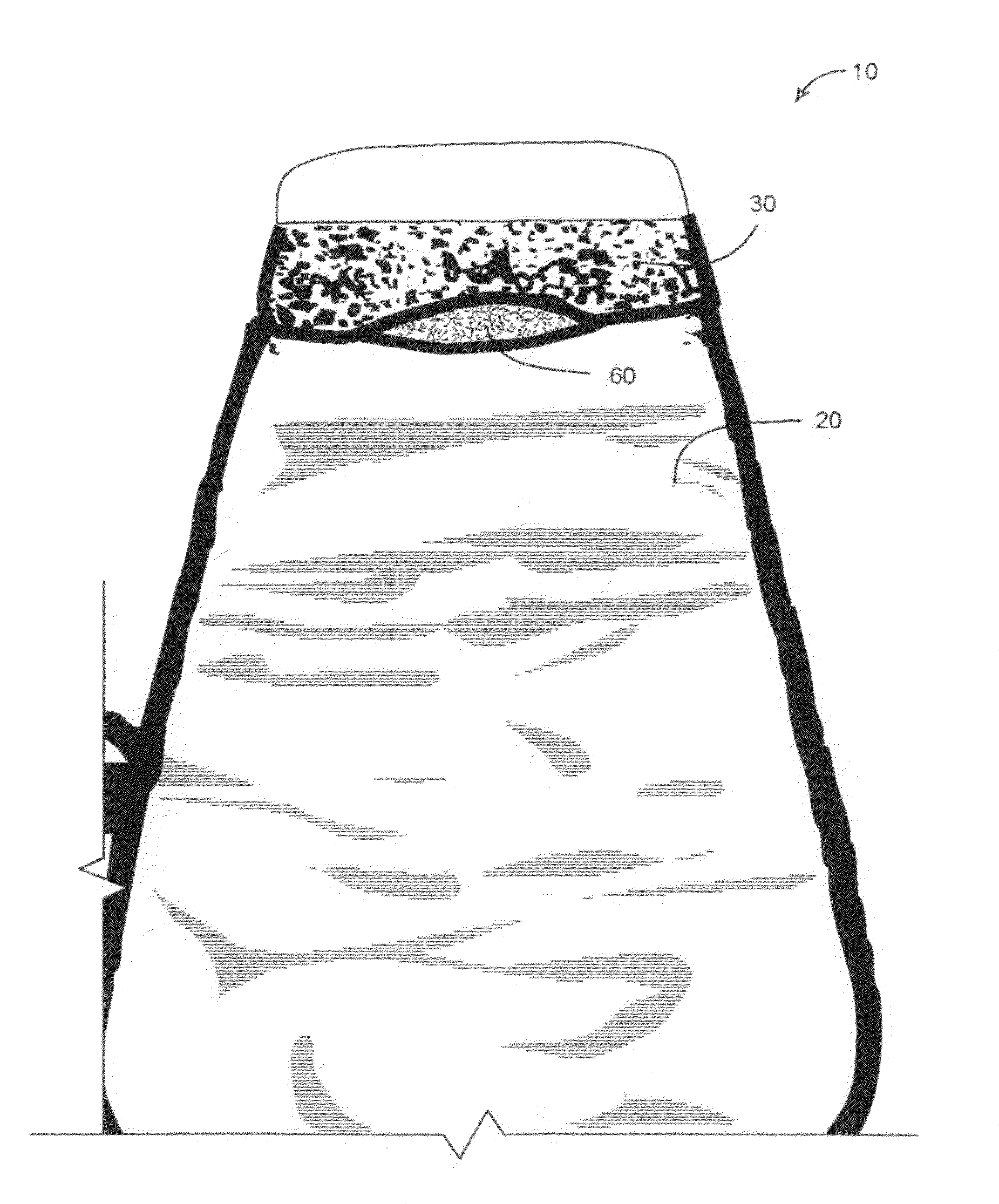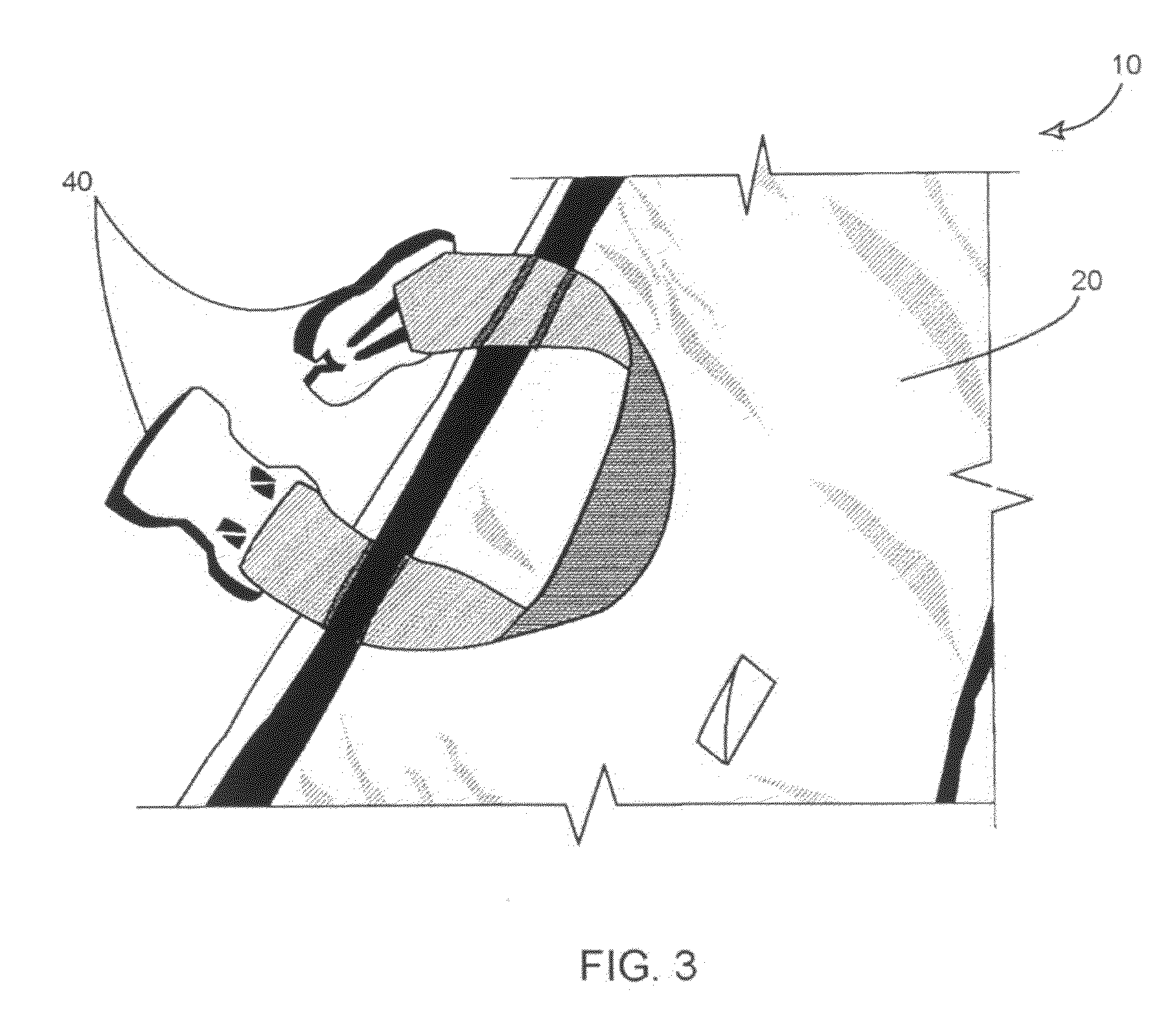Portable diaper changing pad
a diaper changing pad and portable technology, applied in the field of diaper changing pads, can solve the problems of not being able to easily use one parent still faces the problem of diaper changing, prior art devices do not allow a parent to easily change the diaper changing pad with one hand, etc., to achieve the effect of convenient portability, quick unrolling, and convenient carrying of the diaper changing pad
- Summary
- Abstract
- Description
- Claims
- Application Information
AI Technical Summary
Benefits of technology
Problems solved by technology
Method used
Image
Examples
Embodiment Construction
[0012]The portable diaper changing pad is rectangular in shape when unfolded flat and is comprised of three foldable layers. Inside layer 20 is comprised of a water-impermeable material that is easy to clean, such as vinyl. Outside layer 30 is comprised of a soft, machine-washable fabric, which can be chenille or fleece, or other soft, napped fabric. Typically, this fabric is polyester, although other suitable machine-washable fabrics can also be used. There is also a middle batting layer to cushion the child that is typically comprised of polyester or another suitable type of machine-washable fabric. All three layers are sewn together using Extra Wide Double Folded Bias Tape around the perimeter of the pad. Having the inside layer made of water-impermeable material allows a child to be changed on this layer, which is then easily wiped clean.
[0013]The preferred embodiment of the portable diaper changing pad is 12 inches wide by 31 inches long. The particular length was chosen becaus...
PUM
 Login to View More
Login to View More Abstract
Description
Claims
Application Information
 Login to View More
Login to View More - R&D
- Intellectual Property
- Life Sciences
- Materials
- Tech Scout
- Unparalleled Data Quality
- Higher Quality Content
- 60% Fewer Hallucinations
Browse by: Latest US Patents, China's latest patents, Technical Efficacy Thesaurus, Application Domain, Technology Topic, Popular Technical Reports.
© 2025 PatSnap. All rights reserved.Legal|Privacy policy|Modern Slavery Act Transparency Statement|Sitemap|About US| Contact US: help@patsnap.com



